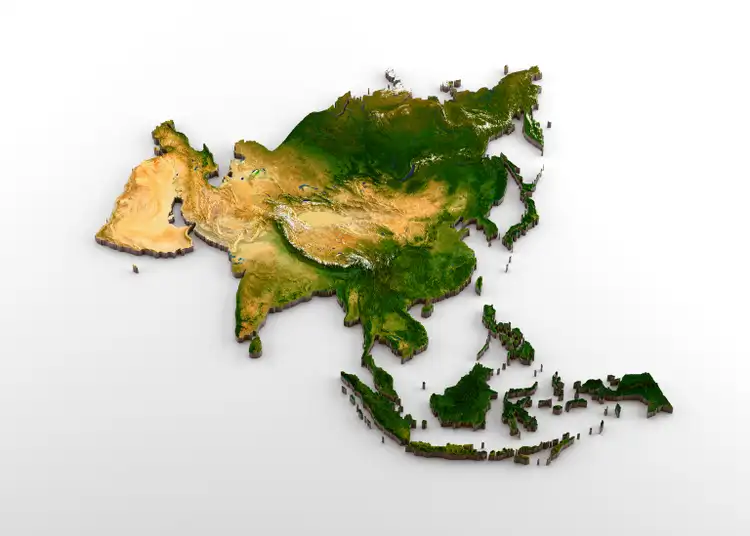Asia's Economic Juggernaut: Navigating Growth, Challenges, and a Shifting Global Role

For decades, much of Asia was defined by poverty, subsistence living, and economic underdevelopment.
Yet, over the last half-century, the continent has transformed itself from a region of vulnerability into the fastest-growing economic powerhouse on Earth.
This radical shift has made Asia, home to over 60% of the world's population, a pivotal player in the global economy, though not without its significant challenges and complexities.
Primary Engines of Economic Growth
Asia's economic success is driven by a diverse set of engines, with different countries contributing in unique ways. A key catalyst has been export-oriented manufacturing, particularly in East and Southeast Asia.
Countries like China and Vietnam have leveraged their vast labor pools to become the "factories of the world," producing everything from electronics to textiles for global markets.
This model has propelled rapid GDP growth and lifted hundreds of millions out of poverty.
Meanwhile, nations such as India are increasingly focused on leveraging their burgeoning domestic market and a skilled, English-speaking workforce to drive growth through the services sector, particularly in IT and business process outsourcing.
Technological innovation is another powerful engine. Asian economies are now leaders in digital technology, with countries like South Korea and Japan at the forefront of advanced manufacturing and robotics, while China is rapidly innovating in areas like artificial intelligence, 5G networks, and e-commerce.
The rise of a massive middle class across the continent has also fueled burgeoning domestic consumption, shifting the growth model from pure reliance on exports to a more balanced, internal-demand-driven model.
This is particularly evident in China and India, where rising incomes and urbanization are creating new markets for consumer goods and services.
Major Challenges and Vulnerabilities
Despite its dynamism, Asia faces complex challenges that threaten its stability and long-term prosperity. Geopolitical tensions and the rise of trade protectionism pose a significant risk, particularly given the continent's heavy reliance on global trade.
SOURCE: Asia Development Bank
The ongoing US-China trade tensions, for example, have forced many companies to reconsider their supply chains, leading to a "decoupling" that can disrupt established economic flows.
The specter of a broader financial crisis also looms, as many Asian nations face the challenge of high corporate and government debt, a legacy of rapid growth and investment that could become a vulnerability in the event of an economic downturn or a sharp increase in global interest rates.
Furthermore, Asia is highly susceptible to climate change impacts. The region's dense coastal populations and agricultural sectors are vulnerable to rising sea levels, extreme weather events, and water scarcity.
These environmental challenges not only threaten food security and public health but also place immense fiscal pressure on governments, which must fund disaster relief and climate adaptation efforts.
These factors add layers of risk to the region's economic outlook.
Resilient vs. Stagnant Sectors
The economic landscape in Asia is one of sharp contrasts. The technology sector is a clear area of resilience and growth.
From China's digital payment and e-commerce giants to South Korea's semiconductor manufacturers and Japan's robotics industry, technology is driving innovation and creating new value.
The renewable energy sector is also flourishing, with nations like China and India investing heavily in solar and wind power to meet both domestic energy demands and climate goals.
This focus on green technology is creating a new wave of industrial growth.
Conversely, some traditional sectors are facing structural weaknesses. The property sector in major economies, particularly in China, is grappling with significant debt and oversupply, which has created a drag on overall economic growth and consumer confidence.
SOURCE: CNN
Additionally, some traditional manufacturing sectors that rely on low-cost labor are facing headwinds from rising wages and automation, forcing a challenging transition to higher-value production. Countries that fail to navigate this shift risk being left behind in the global economy.
Demographic Trends and Economic Future
Demographic trends across Asia present a diverse and complex picture that will shape the continent's economic future.
Some nations, particularly in Southeast Asia and South Asia, are experiencing a "demographic dividend."
This phenomenon, characterized by a large and growing working-age population, provides a powerful boost to economic growth as more people enter the workforce and contribute to national income.
Countries like India and the Philippines have immense potential to capitalize on this youth bulge by investing in education and job creation.
In stark contrast, several advanced Asian economies, including Japan, South Korea, and increasingly China, are grappling with rapid population aging.
Declining birth rates and increasing life expectancy are creating a shrinking workforce and a rising elderly dependency ratio.
This trend puts immense pressure on social security, healthcare, and pension systems. The challenge for these nations is to maintain economic vitality with a smaller, older workforce, a task that will require significant investment in robotics, automation, and labor market reforms.
Impact of Global Events and Geopolitics
Global events and geopolitical dynamics have a profound impact on Asia's economic stability. The US-China rivalry, in particular, has reshaped global supply chains and investment patterns.
As both nations engage in strategic competition over technology and influence, Asian countries are often caught in the middle.
The push for "friend-shoring" or supply chain diversification has led to a redirection of foreign direct investment to countries like Vietnam, India, and Indonesia.
SOURCE: World Economic Forum
This has created new opportunities for some nations, while others, heavily integrated with China, face potential economic disruption.
Regional conflicts, such as the tensions in the South China Sea, also pose a risk to vital shipping lanes and trade routes.
These geopolitical uncertainties can deter foreign investment, disrupt trade, and increase insurance costs, all of which weigh on economic stability.
Navigating these complex geopolitical waters will be a defining challenge for Asia's leaders as they seek to balance their economic interests with the realities of great power competition.
Strategies for Resilience and Competitiveness
In response to these challenges, Asian nations are employing several strategies to enhance their economic resilience and secure long-term prosperity.
A primary focus is on financial and economic integration. Initiatives like the Regional Comprehensive Economic Partnership (RCEP), a free trade agreement among Asia-Pacific nations, aim to reduce trade barriers and strengthen regional supply chains, providing a buffer against external shocks.
SOURCE: Google
Nations are also diversifying their trade partners and building new alliances to reduce dependence on a single market.
To address domestic vulnerabilities, many Asian governments are implementing structural reforms.
These include efforts to strengthen financial regulations to manage debt, invest in green infrastructure to mitigate climate change risks, and reform labor markets to adapt to demographic shifts.
The push for digital transformation is also a key strategy, as governments invest in digital infrastructure and skills training to boost productivity and create high-value jobs.
By focusing on these core strategies, Asia is not just reacting to immediate crises but is proactively building a more robust and sustainable economic future.
You may also like...
The Graduate Dilemma: Why Degrees Don’t Guarantee Jobs Anymore

Explore why university degrees no longer guarantee jobs in Africa, with stats, country case studies, and insights on ski...
The Invention of Inferiority: How Pseudoscience Affects Africans

The fabricated illness of drapetomania, the stubborn myth of reduced pain sensitivity, and the colonial misuse of IQ tes...
Asia's Economic Juggernaut: Navigating Growth, Challenges, and a Shifting Global Role

Dive into the diverse forces propelling Asia's economic growth, from its demographic powerhouses and technological leaps...
5 Tactics To Overcome Fear In The Modern World

Fear often takes the center of our lives as modern day Africans. Here are 5 proven tactics to push it out.
ZEAL MONDAY RESET:The Bamboo Lesson — Why Your Growth Takes Time

Some growth is silent. Like bamboo, years of unseen roots may be preparing you for a rise so sudden and powerful it feel...
Rising Star Strikes: Moses Itauma Delivers Shocking KO to Dillian Whyte!

Moses Itauma delivered a sensational first-round knockout against Dillian Whyte in Riyadh, cementing his status as a top...
Unstoppable Queens: Super Falcons Crowned WAFCON Champions, Ignite National Pride!
)
The Super Falcons of Nigeria secured their record-extending 10th Women's Africa Cup of Nations title with a dramatic 3-2...
The Race for 007: Who Will Be the Next James Bond?

The search for the next James Bond is intensifying, with actors like Callum Turner leading the public's choice while Tar...

